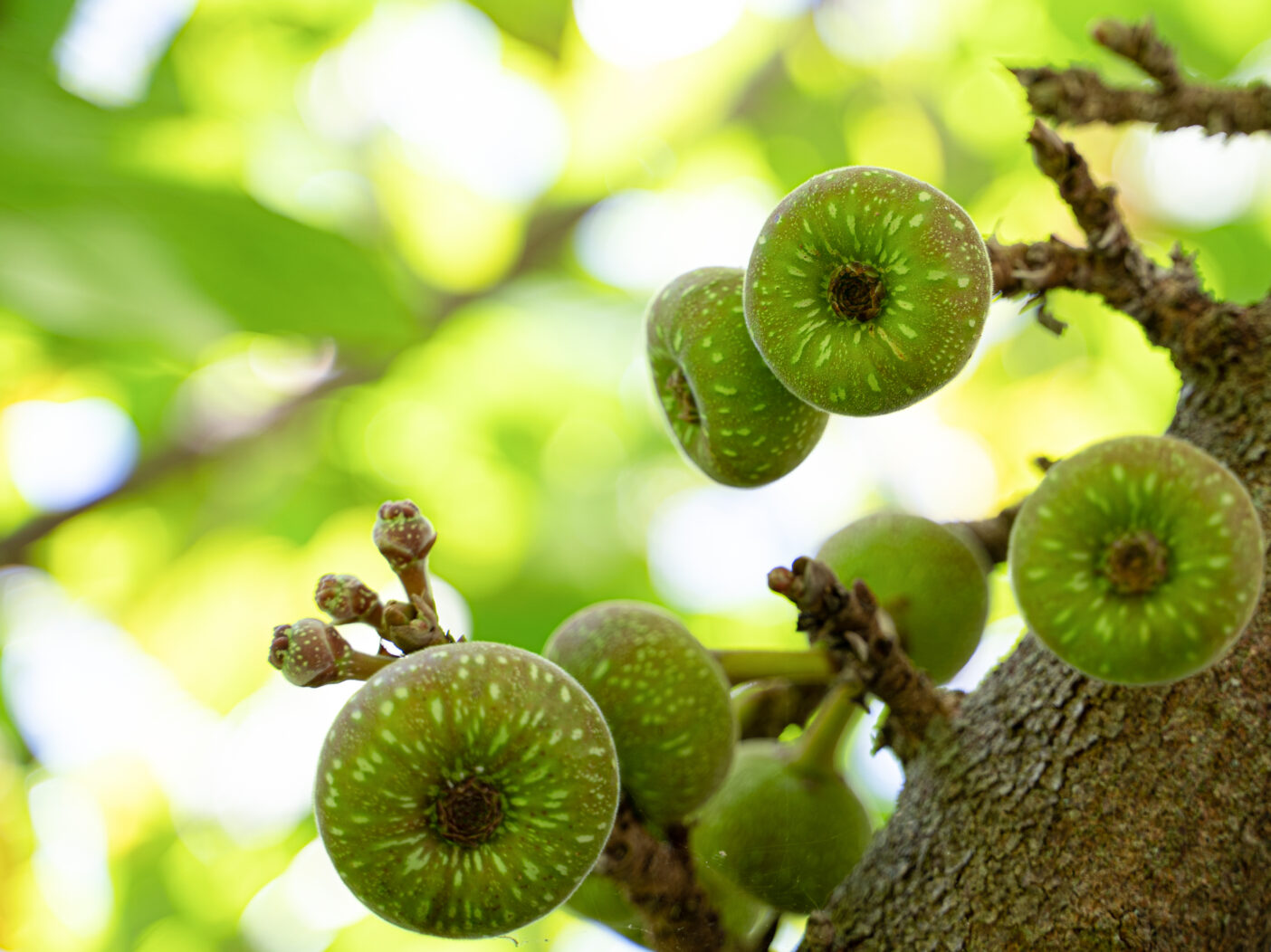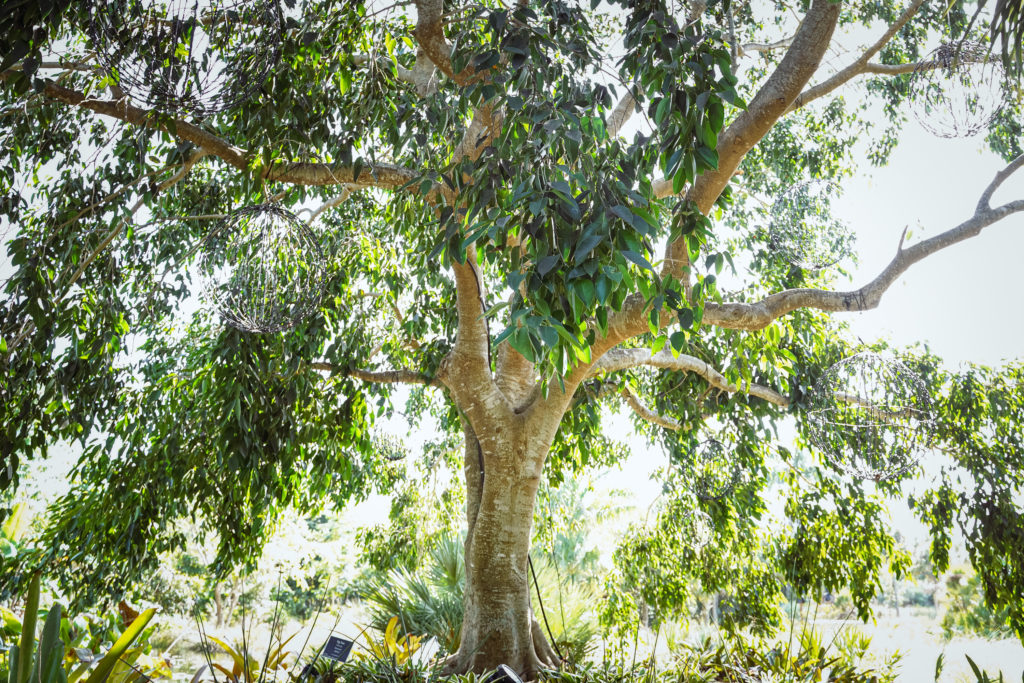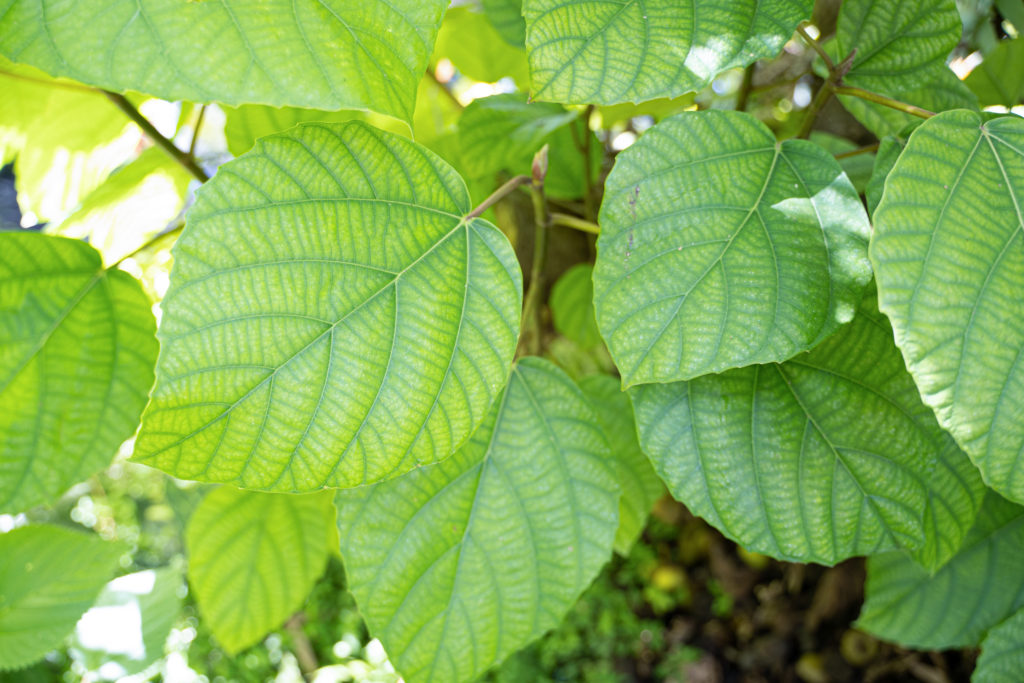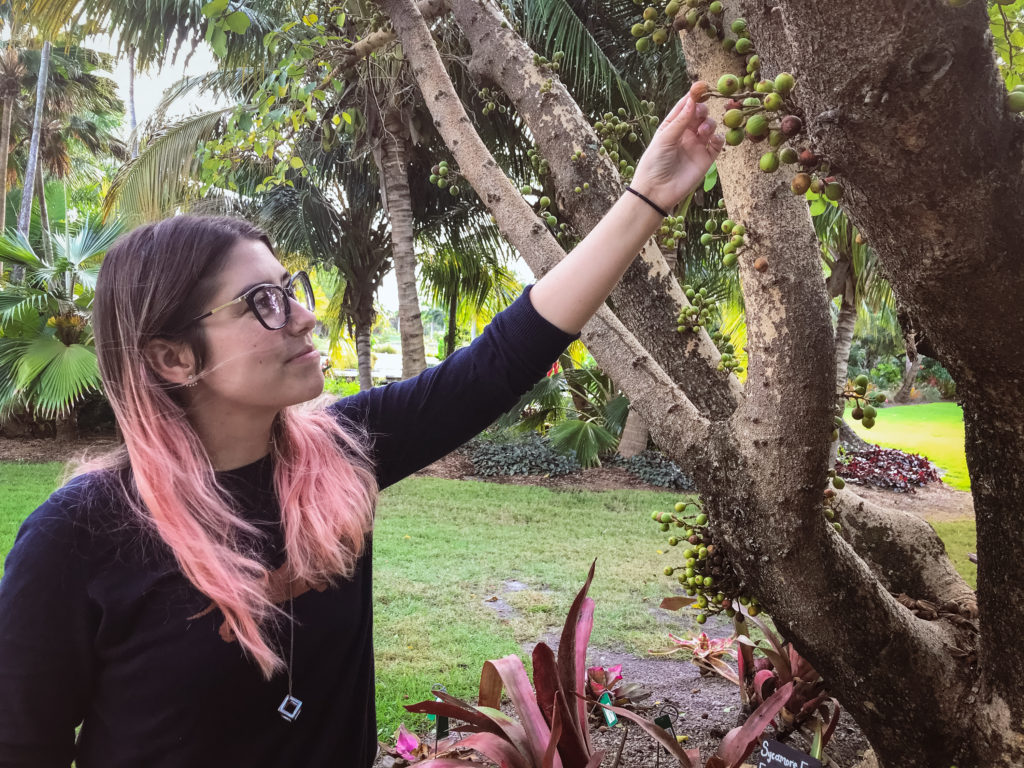
To say figs are a superfruit would be a bit of an understatement. Packed with vitamins A, C, and K and minerals zinc, copper, manganese, and iron, to name a few, is there anything this fruit can’t do? It’s a popular ingredient in shampoos and conditioners, is used as an antioxidant-rich treatment for skin, and when consumed, offers a host of nutritional benefits. Who wouldn’t want to nosh on something less than 50 calories that’s high in fiber and calcium, offering a one-two-punch of digestive health and strong bones?
Well, that’s what I thought, too, until I found out about what goes into the making of a fig.

“Figs have an unusual physiology,” Liz Chehayl, our Brian Holley Curator of Collections, tactfully begins, and then in her matter-of-fact way proceeds to tell me how the fig is pollinated. Fair warning: It’s a process that will delight grade-school boys, and probably no one else.
For starters, the flowers of the fig actually grow inside the fig itself. Just take a look at the sycamore fig (Ficus sycomorus), adjacent to the Performance Lawn and Kapnick Hall. When it’s in bloom, you can see its green and maroon fruit adhered to the tree’s trunk rather than to its branches. But where are its flowers? It’s not that there aren’t flowers; it’s just that they’re not where you can see them.
In the case of the edible, or common fig (Ficus carica), its pollinator is one very specific species of wasp. Female wasps penetrate a fig and lay their eggs inside, losing their wings and antenna in the process. The eggs hatch into larvae that feed on the contents of the fig, grow into sexually mature wasps, then mate. The wingless males die inside the fig, and the females, equipped with inverted teeth and hooked legs, make their exit from the fruit at the very time the male flowers mature, carrying the fig’s pollen with it and continuing the cycle once more.
Fig lovers, there is a silver lining: An enzyme known as ficin breaks down the wasp into protein, so when you bite into a fig, you’re not actually biting into a dead wasp. Add to that the fact that most figs grown in the U.S. are self-pollinating, so chances are, the variety you’re eating is devoid of wasp remnants.
Fruit aside, the sycamore fig itself has a storied past. It boasts multiple mentions in the Bible, and tracing back to Latin lore, is linked to the Roman god Bacchus. It even has its place in other cultures, as ancient Egyptians perfumed their tombs with the fig tree’s sickly-sweet fruit.
The sycamore fig in the Garden, one of more than 900 fig species in the mulberry (Moraceae) family, is estimated to be about 10 years old. While you can eat the fruit of this fig, it’s not grown commercially like that of Ficus carica, and it might not be as flavorful as the figs you know and love. Next time you’re in the Garden, come experience this living piece of history. Just don’t sample its fruit.
Photos: Figs of the Garden
About the Author
Jenny Fuentes is the Content Manager at Naples Botanical Garden. She is a communications professional with experience in the nonprofit and higher education arenas. It’s the thrill of a good story that keeps her anchored to this profession.






